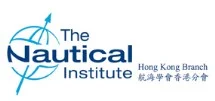ships cranes wires &
archive > archive presentations
Ships Cranes and Wires - Problems and their Prevention
This was the title of a presentation given by Capt. Paul Walton, director of LOC Hong Kong in April, and more than 30 members and guests were present to hear one of the best practical talks we have hosted.
Paul sailed on and commanded a variety of geared bulk carriers before joining LOC, where he and his team regularly encounter crane problems, and he put together a fascinating presentation which can be viewed on the branch website.
After explaining the various types of crane at sea and offshore (including union purchase and Hallen derricks still found in the Far East), Paul pointed out that there are no internationally agreed requirements, although these will be introduced as part of SOLAS in 2017. Most ships have to comply with a host of test and inspection requirements, but these are patchy at best and there are no rules about the training of crane drivers.
The offshore industry fares slightly better, because the UK Lifting Operations and Lifting Equipment Regulations (LOLER) have been widely adopted. These cover operations, maintenance, testing and inspection, and operators are required to have formal training before they are permitted to perform lifts on the deck of a rig, or offshore vessels where cranes are employed. Only after gaining sufficient experience are they permitted to conduct dynamic and over-side lifts, and their performance is re-assessed periodically.
At sea training is a matter for individual companies or ships, but most lifting gear is handled by stevedores, and the mariner has no control over their training or competence.
Turning to wire rope damage, our speaker showed a superb series of illustrations of the various problems such as abrasion, corrosion, fatigue breaks, crushing etc., and described them fully. Most importantly, he gave clear descriptions of how they happen and how they can be detected or prevented. This was information which every deck officer should be given, although I suspect few are. There were even suggestions from the audience that our speaker should write a book!
We then learned about control problems including controllers sticking, inoperative limit switches and cut-outs, hydraulic oil contamination and blocked coolers. These were not theoretical musings, but examples from real life, richly illustrated with photographs taken by Paul and his colleagues.
The same was true of mechanical problems, where we saw photographs of brake problems, wear on slewing bearings and bolts, and damage to hydraulic motors and gear boxes.
There was a sobering section on structural damage, with jibs which collapsed due to a lack of lubrication, misuse of limit switches and failure of luffing wires, plus a turret which collapsed when the slewing bearings failed.
Paul underlined the importance of proof testing, and suggested that because maintenance and inspection regimes are different for different makes of crane, the manufacturers’ instructions and checklists should always be followed. Adequate spares should be carried, and cranes must be included in a vessel’s planned maintenance system.
The talk concluded with a brief description of grab types and some problems associated with them, including the problems of operating grabs in a seaway.
This was a thoroughly professional briefing by a man who knows his subject intimately.
27.04.16

